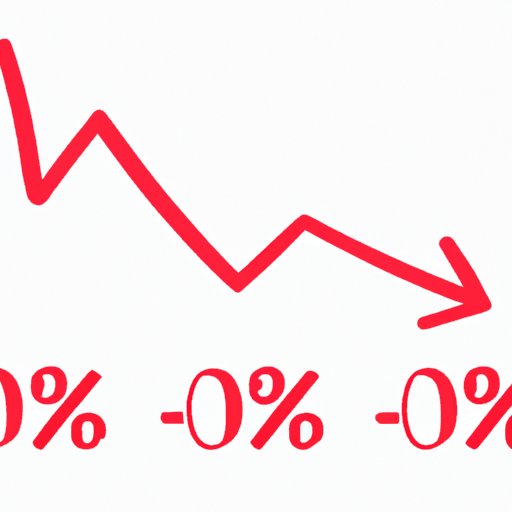
Introduction
Percent decrease is a fundamental mathematical concept that allows us to analyze trends, calculate discounts and savings, and identify opportunities for growth. Simply put, percent decrease is the measure of how much a value has decreased in relation to its original value, expressed as a percentage. Whether you’re a student, a business owner, or simply someone interested in acquiring new skills, mastering percent decrease calculations is a valuable asset that can help you make more informed decisions and better understand the world around you.
Mastering the Art of Percent Decrease: A Step-by-Step Guide for Beginners
Calculating percent decrease can seem daunting at first, but with some basic understanding of the formula and a step-by-step approach, anyone can learn this important skill.
Understanding the formula for calculating percent decrease
The formula for calculating percent decrease is:
Percent Decrease = [(Original Value – New Value) / Original Value] x 100
This formula expresses the percent decrease in relation to the original value. It works by subtracting the new value from the original value, dividing that result by the original value, and then multiplying by 100 to express the result as a percentage.
Step-by-step guide for solving percent decrease problems
Now that we have an understanding of the formula, let’s look at a step-by-step approach to solving percent decrease problems:
- Determine the original value and the new value
- Calculate the decrease by subtracting the new value from the original value
- Divide the decrease by the original value
- Multiply the result by 100 to get the percent decrease
Demystifying Percent Decrease: Tips and Tricks for Accurate Calculations
While calculating percent decrease is a straightforward process, there are some common mistakes that can lead to incorrect results. Here are a few tips to ensure accuracy:
Common mistakes to avoid while calculating percent decrease
- Make sure you’re using the correct formula and understand the order of operations
- Ensure your original value and new value are correctly recorded
- Pay attention to decimal places and rounding
Tips for quick and accurate calculations
- Round up or down to make the calculation easier
- Use a calculator or spreadsheet for more complex calculations
- Practice makes perfect – the more you calculate percent decrease, the easier it becomes
From Confusion to Clarity: Simplifying Percent Decrease Calculations with Examples
Let’s take a look at some examples to further clarify how to calculate percent decrease:
Examples of percent decrease calculations with solutions
Example 1: An item originally priced at $50 is now on sale for $40. What is the percent decrease?
- Original value = $50
- New value = $40
- Decrease = $50 – $40 = $10
- Percent decrease = ($10 / $50) * 100 = 20%
Example 2: In the first quarter of the year, a business generated $100,000 in revenue. In the second quarter, revenue decreased to $75,000. What is the percent decrease in revenue?
- Original value = $100,000
- New value = $75,000
- Decrease = $100,000 – $75,000 = $25,000
- Percent decrease = ($25,000 / $100,000) * 100 = 25%
Practical Applications of Percent Decrease: Calculating Discounts and Savings
Percent decrease can be applied in a variety of real-life situations. One of the most common applications is calculating discounts and savings.
Example applications of percent decrease in real life scenarios
- Determining the discount on a sale item
- Calculating the savings from switching to a cheaper service or product
- Analyzing trends in revenue or sales
Calculating discounts on products and services using percent decrease is a simple and effective way to compare prices and identify the best deal.
The Importance of Percent Decrease: How to Analyze Trends and Identify Opportunities
Percent decrease can also be used to analyze trends in sales, revenue and profits over time. By calculating the percent decrease or increase from one period to another, businesses can identify areas for improvement and take action to address them.
For example, if a business has experienced a steady decrease in revenue over the past few quarters, analyzing the percent decrease can help identify the cause of the decline and take steps to turn it around. On the other hand, if a business has experienced a significant increase in revenue, analyzing the percent increase can help identify what factors contributed to the growth and capitalize on them.
Conclusion
Calculating percent decrease is a valuable skill that can be applied in a variety of contexts. By understanding the formula and following a step-by-step approach, anyone can master this concept. It’s important to remember to avoid common mistakes, use tips and tricks for accurate calculations, and practice regularly to improve your skills. With the ability to analyze trends, calculate discounts, and identify opportunities, mastering percent decrease is an asset for anyone, whether you’re a student, a business owner, or simply curious about the world around you.





